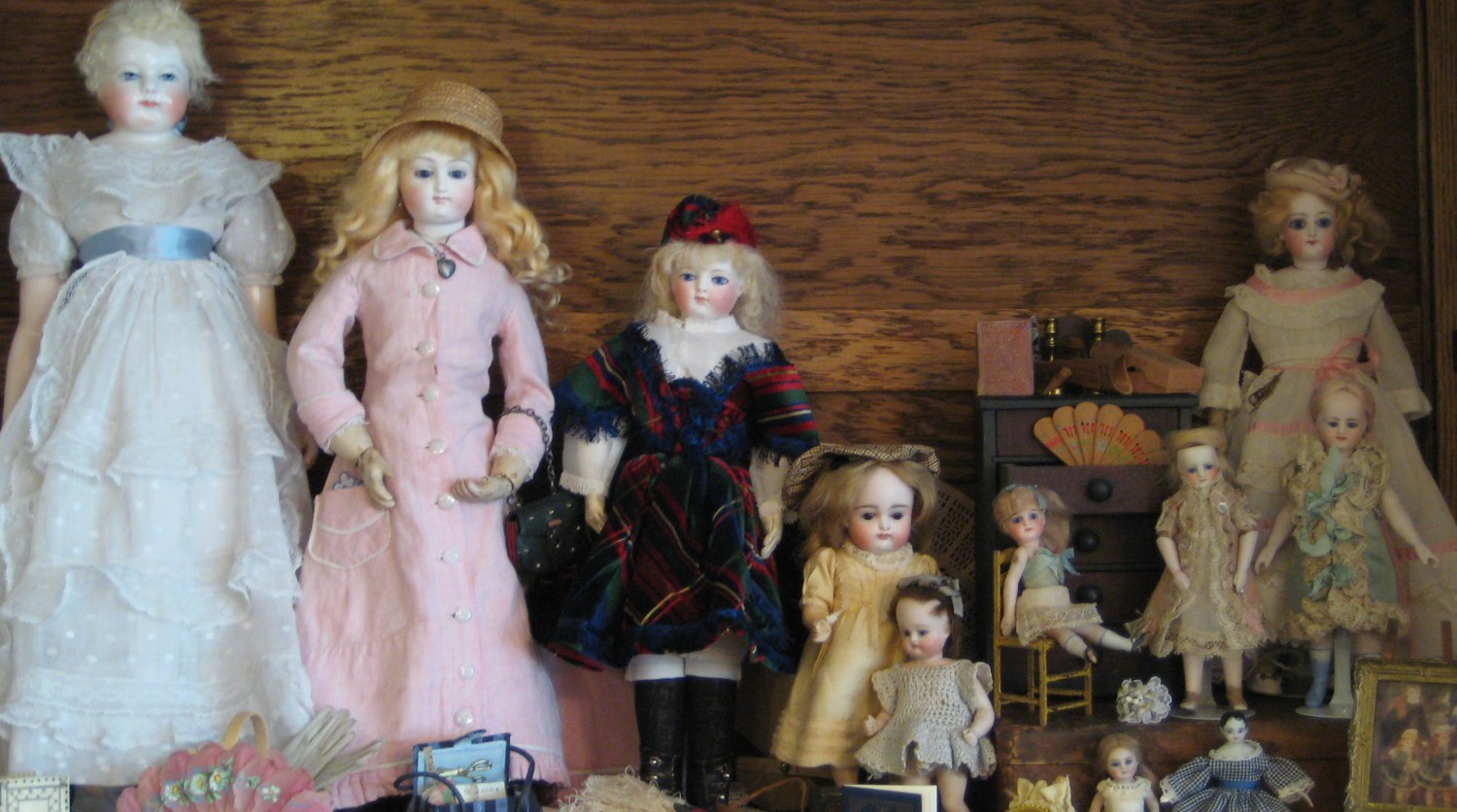Today, I am going to show you how to begin sewing your doll’s slip. We will sew the back seam, finish the open back edges and hem the slip. Next week, we’ll attach the waistband and sew on the lace. Read through the instructions before you begin. At the end, I’ve listed a few hints for easier, faster stitching.
In the 19th century, undergarments, blouses and other garments that were worn next to the skin were usually sewn with french (or double) seams because these garments were washed frequently. The doubled seams made them sturdier. Outer garments, often made from delicate or expensive fabrics, were never laundered, but spot cleaned, so they usually had single seams.
When we cut out the slip, we did a rough measurement of the length. Since my doll’s slip will be trimmed with lace, I measured from her waist to the top edge of where the lace will go. That gave me 1 1/2″.
I added one inch to that measurement and snipped the fabric at the 2 1/2″ mark. That gives me 1/4″ at the top and 3/4″ for the hem.
To get a straight cut, I pulled a thread at the snipped edge. Then I cut along this line. This method of getting a straight edge on fabric can be used instead of ripping it (like we did last week).
Now we can finally begin sewing. Fold your fabric so that the short ends line up. We will start with running stitches. This is simply a single stitch where your needle goes in and out of the fabric in a straight line. Fill your needle with stitches, then pull it through and start again until your seam is long enough.
Sew a short running stitch 1/4″ from the short edge. For my slip, I started at the bottom and stitched up to about 1 1/8″ from the top. This opening will allow the slip to be easily slipped over the doll’s hips. If your doll is larger, you should leave a longer opening up to 2″ for a 10″ doll.
Do a back stitch over your last stitch and slip your needle through the loop. Make a couple more back stitches and snip your thread.
Next, snip the seam from the short edge up to, but not through, your last stitch. Then trim the edge close to your stitches.
Turn the slip inside out and press your seam flat, pulling the top, unsewn part to the outside. Then, sew another line of running stitches between 1/8″ and 1/4″ from the fold. Make sure this seam encases the cut edge. Sew up to the same point as the first seam.
Turn the slip right side out and iron your french seam to the left. Make sure you press the unsewn part at the top along the same line.
This is what it looks like on the inside.
Next, turn back the raw edges and slip stitch them down. Make a knot in your thread and sew a tiny stitch into the fold, then stitch through 2 or 3 threads in the base fabric. Make the stitches that will show on the outside line up with the threads in the fabric. In other words, the stitches will be perpendicular to the folded edge.
Stitch down to the bottom of the opening, then sew a couple of stitches across the back, then up the other side to the top. Finish off with a couple of back stitches.
This is how it looks from the right side.
Turn the slip inside out again and fold up and press the hem 3/4″ from the bottom edge.
Then, turn the raw edge under about 1/4″ and press again.
Sew the hem just like the slip stitched edge at the back opening. I am right handed and hold the fabric with the hem edge in my left hand and stitch around the entire hem. I finished my hem last night at my doll club meeting.
Stitching tips:
- To sew faster and tinier running stitches, bring your needle through the fabric only as far as the beginning of the next stitch. For many years, I would push the needle through the fabric, then pull it back to where I wanted the next stitch to begin. Try to start the next stitch as soon as the needle pierces the fabric after the previous stitch.
- Don’t use pins if you don’t have to. Pinning and unpinning is time consuming and the pins get snarled with your sewing thread. Just keep track of how your seams are lined up as you sew and readjust as you go to keep things straight.
- Find a comfortable, well lit place to sew.
- I wear bifocals (so does Supergirl). I also own a pair of drugstore magnifying half glasses that I can wear over my bifocals to see more clearly. Use magnification and extra light if you need it. Most people need it, so don’t be ashamed of how you look while you are sewing. Be proud of how good your stitching looks when you can see what you are doing.
- Invest in a tiny ironing board. I got mine from Dollspart about 20 years ago. They still sell them.
- Click on my pictures to make them bigger if you need to see more detail.
Happy sewing! Let me know if you have any questions.






















